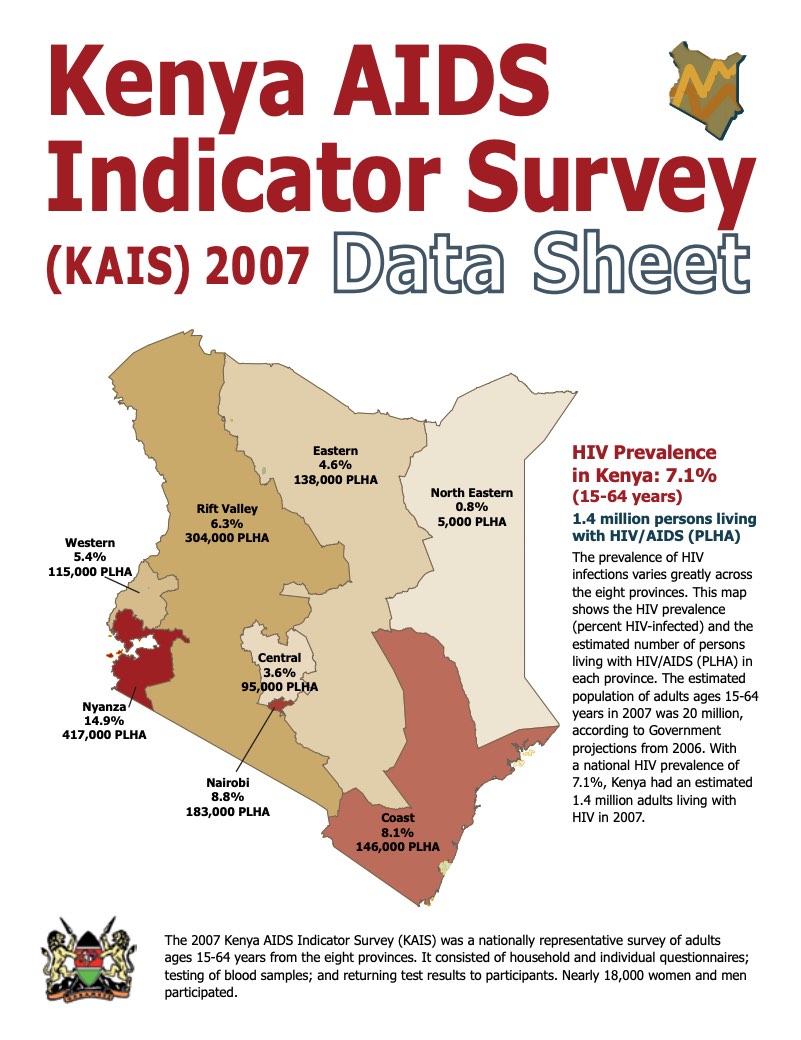
Kenya AIDS Indicator Survey 2007 Data Sheet
Product: Data Sheet
Author: PRB
Date: October 14, 2009
Focus Area
(July 2009) Representative estimates on behavioral, clinical, and biological HIV/AIDS indictors are critical for evaluating a country’s response to the HIV epidemic. National population-based surveys with HIV testing provide national-level prevalence estimates and the opportunity to link HIV status with behavioral, social, demographic, and other biological information. The 2007 Kenya AIDS Indicator Survey (KAIS) was Kenya’s first survey of this kind and provides comprehensive information on HIV and other sexually transmitted infections. These data provide the information needed for planning interventions for HIV prevention, care, treatment, and allocation of resources. The 2007 KAIS survey was conducted in all eight provinces and nearly 18,000 men and women between the ages of 15 and 64 years participated.
The 2007 KAIS was carried out by the Kenya National AIDS and STI Control Program (NASCOP), Kenya National AIDS Control Council (NACC), Kenya National Bureau of Statistics (KNBS), National Public Health Laboratory Services (NPHLS), Kenya Medical Research Institute (KEMRI), and the National Coordinating Agency for Population and Development (NCAPD). It was made possible through technical and financial support provided by the U.S. President’s Emergency Plan for AIDS Relief (PEPFAR) through the U.S. Centers for Disease Control and Prevention (CDC) and the United States Agency for International Development (USAID) and by the United Nations through UNAIDS, and the World Health Organization (WHO).

 ">
">